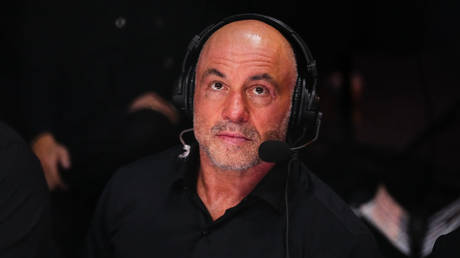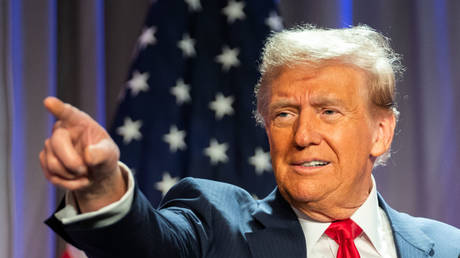
Three decades ago, Bayliff, when working under marketing director Tony Stephens at former sports agency SFX, embarked on the first stages of Brand Beckham: the transformation of a shy, London-born son of a gas fitter with a prodigious right foot into an archetypal beast of branding.
What transpired was epochal work, the landscape of commercialisation forever changed as sport and culture discovered shared territory.
Beckham transcended the confines of a 115 x 74 yards (give or take) pitch as an exception to the rule. The opportunity to do so in women’s football feels more rule than exception.
It is why Bayliff, who founded sports agency Arete in 2015, feels a familiar frisson of excitement.
“What’s happening isn’t a copy of the men’s model,” Bayliff, who began representing women’s footballers five years ago and counts Everton’s Ruby Mace, Tottenham Hotspur’s Jess Naz and Manchester City’s Khiara Keating among his clients, tells The Athletic.
“It’s a hybrid commercialisation. There’s a professionalisation that’s happening with the clubs and the players: They’re building value chains, training, medical, marketing, data, comparable to men’s football.
“But there’s really clear differentiation. The women’s game has been brilliant so far at retaining distinctive culture, community engagement, transparency, activism, and fan intimacy. The macro market signals point to commercial value rising faster for women’s football than for men’s, albeit from a very low base.”
You don’t need to be a marketing savant to reach a similar conclusion.
Deloitte’s latest analysis predicted that women’s elite sports would generate global revenues of $1.28 billion (£1.2 billion) in 2024, with football leading this charge at $555 million.
A peak TV audience of 16.2million in Britain watched England’s Euro 2025 final penalty shootout victory over Spain on free-to-air channels ITV and BBC. ESPN has seen a 61 per cent increase across all platforms when it comes to NWSL consumption. Cosmetic brands such as IL Makiage and ELF are diving in. Fashion houses are inviting footballers to walk their runways. Thirteen years ago, former USWNT forward Alex Morgan wore a dollar’s worth of pink Mueller pre-wrap in her hair. Look how that turned out.
The lines to draw are obvious: Women’s football is a market ripe for harnessing, a wide open door to new revenue streams, new audiences and, if you play your cards right, high returns. This is true for investors, brands and, most importantly, players, who can build their own brands to cut through the competitive white noise.
Yet, the past few weeks, most notably the online froth surrounding former England goalkeeper Mary Earps’ tell-all autobiography, have begged an uncomfortable question: Is the culture surrounding the commercial and branding opportunities within women’s football more fraught than we care to admit?
It’s worth dwelling a little on the roots of women’s football’s commercial opportunity. Research analysing the commercial viability of women’s football shares a familiar refrain: women’s footballers tend to lead in more cultural and value-based conversations with marketers than their male peers. Sports analytics experts Nielsen, for example, found in 2024 that women athletes over-indexed in key values such as trust and inspiration, qualities that drive brand recall, drive purchase intent and send potential brand partners supplicating outside players’ front doors.
Bayliff calls this cultural adjacency, or the ability of women’s footballers on average to work far better in crossover zones such as fashion, activism, music and wellness than men’s footballers on average. “They’re far more relevant outside of regular sport cycles,” he says.
Bayliff cites two key attributes to this crossover, or at the very least the perception of them: authenticity and accessibility.
Where scrupulous media training has in many ways sterilised the men’s game, women’s football has historically been venerated for its unfiltered rawness, the sensation that all that is separating the footballer from the fan is some smidgen of air and some fencing around the pitch.
Even as the game evolves and profiles of players have grown, maintaining this perception of intimacy and honesty has been as crucial to maintaining its growth as the product on the pitch. Many players still flay their lives in ostensibly unedited, unscripted flashes directly into the phones in our pockets, along with the promise that we, and we alone, know their true selves.
“It’s one of the real charms of the women’s game right now, that there is a real close connection between player and fan,” says Bayliff. “It’s real gold dust and long may it continue, albeit I fear it won’t continue like that forever as the game continues to grow in popularity and status.”
The maths aren’t complicated. An industry centred around personality and brand optics brings unprecedented opportunity for personal gain, as well as command over one’s own narrative.
It also carries risk. The more players reveal of themselves, the more exposed flesh there is to consume, to appraise, to potentially pillory. Add in the head-spinning rate of change in exposure players have experienced over the past five years alone, the result can be disorientating, the rules of engagement ever changing.
Recent events surrounding Earps or Chelsea captain Millie Bright are examples of the potential pitfalls of a brand-driven economy. The comment section under Chelsea’s post on X commemorating Bright becoming the Women Super League’s (WSL) leading appearance maker turned into a cesspit, a likely consequence of Bright’s comments on her podcast regarding the Earps saga and the impact on teammate Hannah Hampton.
It also highlighted a growing tension in the ongoing branding war: How authentic can a player really be when kowtowing to an economy for mass consumption?
It is the conversation Bayliff has had with clients since the 1990s but one becoming increasingly important.
“What I often find is that a lot of players will sit there and go, ‘Yes, yes, yes I really want that, I really want a boot deal,’ but what they don’t fully grasp is the investment and sustained effort that it takes,” he says.
“A player has to evaluate whether it’s for them or it’s not for them. But they obviously have to do it wholeheartedly. They’ve got to do it knowing what they’re doing with their eyes wide open to all the pros and cons for going on that brand-building journey.”
There is no social contract that players must drink from the waters of branding. Many opt out, for personal reasons but also for privacy concerns. According to multiple agents, like all of whom mentioned in this article preferred to remain anonymous to protect relationships, players have expressed concerns over the intensity of fanbases, particularly when it comes to personal relationships or expressing a contrarian opinion.
Risk is inherent in any branding exercise. It’s easy to forget just how fraught Beckham’s ascent was.
According to two agents and multiple club officials, players’ high profiles and strong branding can be leveraged in contract and transfer negotiations, either by the selling club or the player themself. And according to sources, at least one high-profile player in the WSL was not sold in a recent transfer window due to potential negative impacts on her club’s commercial opportunities.
FIFA’s Setting the Pace, Fifa Benchmarking Report on Women’s Football released earlier this year, said the average annual salary for a female professional football player globally is around $10,900 (£8,400), a figure “significantly skewed,” FIFA said, by a small number of top clubs.
Among teams the global governing body designated as Tier 1 — a grouping of 41 clubs from 16 countries with professional leagues, among other criteria — the average salary was around $24,030. Sixteen of those top clubs paid an average gross salary of over $50,000, with the highest approximately $120,000.
The figures paint a more honest reflection of the current financial landscape for the majority of women’s professional footballers. It is still not enough just to play the game. You need to sell yourself within it.
“I do believe that there will come a cautionary note to players as their profiles grow, as their commercial value increases, as the media appetite and attention increases, that they are going to be there to be shot at, unfortunately,” Bayliff says.
“It’s not just English media or British media, but we certainly don’t like a poppy to grow too tall without it getting chopped down now and again. Inevitably, there are gonna be more traps that they stand on.
“I believe there’s a small price to pay for progressing in a really exciting commercial journey.”
This article originally appeared in The Athletic.
Women’s Soccer
2025 The Athletic Media Company





